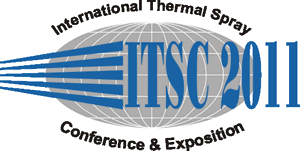
|
2727 |
|
Thursday, September 29, 2011, Saal A 11:50 AM Young Professionals |
|
Development and characterization of oxide ceramic APS coatings for microwave absorption |
|
Philipp Müller* / University of Stuttgart
IFKB, Germany Miriam Floristán/ University of Stuttgart, Germany Andreas Killinger/ University of Stuttgart, Germany Rainer Gadow/ University of Stuttgart, Germany Antonio Cardella/ Max-Planck-Institut für Plasmaphysik, Germany Chuanfei Li/ Max-Planck-Institut für Plasmaphysik, Germany |
|
Thermonuclear fusion is a promising source of clean energy for the future. Max-Planck-Institut für Plasmaphysik (IPP) (Greifswald, Germany) is currently working on the new type of fusion reactor, the stellarator Wendelstein 7-X. New components and concepts are investigated for the construction of this fusion reactor with the aim to enable its large-scale use. The extreme operating conditions of fusion reactor devices have lead to an increasing interest in the field of high performance materials. The present work describes the development of coating systems acting as efficient absorbers for 140 GHz radiation, which is the microwave frequency to which the analysed components of Wendelstein 7-X are subjected. Several types of oxide ceramic coatings were applied on copper substrates by Atmospheric Plasma Spraying. Different powders in composition and grain size were used as feedstock material for the coating operation. The influence of the process parameters on the coating properties and microwave absorbing capability was analyzed. The coatings microstructure and mechanical properties were characterized in terms of porosity, microhardness, roughness, adhesion and residual stresses. XRD and SEM were carried out. It was found that thickness and microstructure of the coatings have a significant influence on microwave absorption behaviour. For Al2O3/TiO2 coatings, absorption values over 90% were obtained over a broad range of incidence angles for the probing beam. After optimization of the coating structure for maximum microwave absorption on planar substrates, the coating process was adapted to several real reactor components that will work in Wendelstein 7-X. |